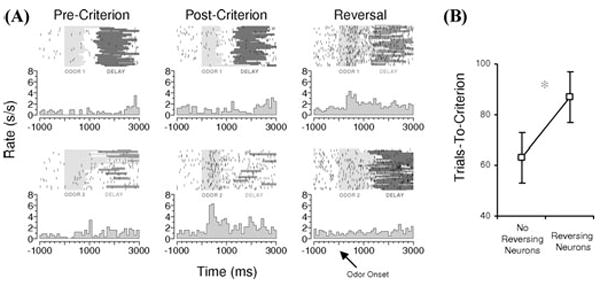FIGURE 2.

Flexibility of associative encoding in OFC is inversely related to speed of reversal learning. (A) Example of associative encoding in a rat OFC neuron recorded during acquisition and reversal of a two-odor discrimination problem. Neural activity is shown synchronized to odor onset on each trial, in both raster and peri-event time histograms, for trials before learning (pre-criterion), after learning (post-criterion), and after reversal (reversal). Before reversal, odor 1 predicts sucrose, and odor 2 predicts quinine. The neuron exhibits a phasic response during odor sampling that develops with learning and tracks the predicted outcome (quinine) across reversal. (B) Average trials required to attain criterion on the reversal in sessions in which reversing cue-selective neurons were recorded versus sessions in which cue-selective neurons were recorded that did not reverse. Rats performed significantly worse in sessions with reversing neurons. (Data adapted from Stalnaker et al.22) (In color in Annals online.)
